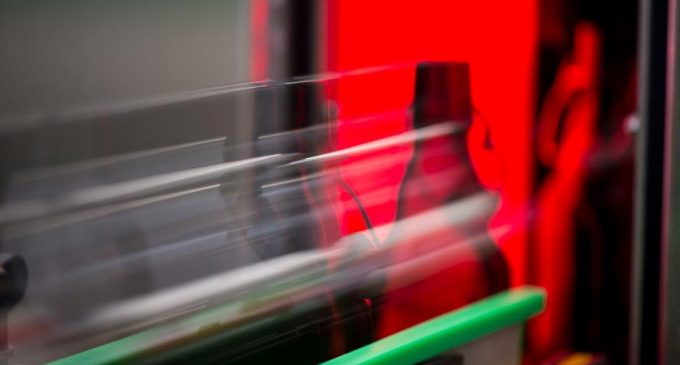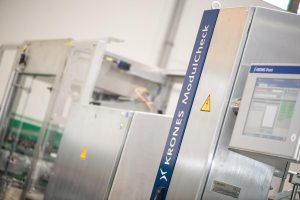The Pott’s Brewery Invests in New Inspection Technology

The Pott’s Brewery in Oelde, Westphalia, is synonymous with swing-stopper bottles and also demonstrates this expertise when it comes to contract-bottling for beer and beer-based mixed drinks. To upgrade the quality of its products still further, Pott’s has now invested in a new Linatronic empty-bottle inspector from Krones combined with a ModulCheck rubber seal monitor, both of which have been integrated into the existing Krones bottling line. Numerous advantages of this improved inspection unit contribute towards ensuring that the brewery’s 24,000-bph filling line for swing-stopper bottles is now way ahead of its time. The line is run in two-shift operation throughout, and is used both for filling the brewery’s own beer specialties and for contract-bottling.
Rubber Seal Inspection by a ModulCheck
Pott’s placed an order with Krones for a new ModulCheck rubber seal monitor and for a Linatronic 735 empty-bottle inspector. The upstream ModulCheck verifies the presence and correct colour of the rubber seals on the swing-stopper bottles’ porcelain heads; it can do this for all positions of the rubber seal. Moreover, the unit detects soiling, faded rubber seals, and any labels/label residues still adhering to the swing.
 The new ModulCheck offers numerous advantages: it does not touch the bottles, and can also be relied upon to detect soiling in the area of the porcelain head. What’s more, it doesn’t consume any wear parts, and can easily be matched to a new variant at change-overs
The new ModulCheck offers numerous advantages: it does not touch the bottles, and can also be relied upon to detect soiling in the area of the porcelain head. What’s more, it doesn’t consume any wear parts, and can easily be matched to a new variant at change-overs
Impeccable Monitoring and Upgraded Quality
The latest model of the Linatronic 735 contains a variety of modules like base inspection, sealing-surface inspection, side-wall inspection or lateral-neck-finish inspection. When inspecting swing-stopper bottles, the Linatronic also takes a long hard look at the stopper itself: if the clamp-type lower part of the swing-stopper and the porcelain head are on different sides of the neck area, a four-mega-pixel neck-finish camera can be relied upon to detect this fault, and to check the sealing surface as well.


































